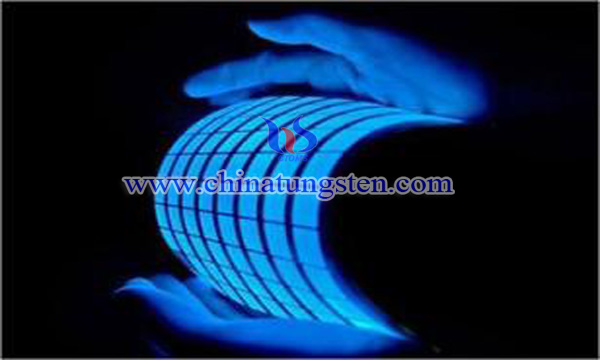Co-doped Barium Tungstate Thin Film Preparation by Magnetron Sputtering
- Details
- Category: Tungsten Information
- Published on Sunday, 29 December 2019 18:32
Tungstate is an important inorganic functional material, which has broad application prospects and development potential. It can be used as scintillation crystal, luminescent matrix material, photoluminescent material, gas sensitive material, catalyst, etc. Tungstate is a typical self activating luminescent material. Its luminescent source is WO42- complex ion. Under the excitation of X-ray, ultraviolet light and cathode ray, they can emit high-efficiency fluorescence. According to the different structure, tungstate can be divided into two types: scheelite type and wolframite type. In tungstate, calcium tungstate, lead tungstate, zinc tungstate, cadmium tungstate and barium tungstate are important inorganic materials.

The unique crystal structure of barium tungstate endows the material with superior luminescent and stimulated Raman scattering properties, so it can be used as a good optical material or laser donor material, and has important application value and development prospect in the fields of optoelectronics, medicine, laser sensor, etc.
A Co-doped barium tungstate thin film with barium tungstate as the substrate and cerium and titanium as the main luminescent center was prepared. Compared with the traditional display screen made of luminescent powder, the luminescent film shows strong advantages in contrast, resolution, heat conduction, uniformity, adhesion to the substrate, gas release rate and so on. Therefore, as functional materials, light-emitting thin films have broad application prospects in flat panel display fields such as CRTs, elds and feds. The titanium cerium co-doped barium tungstate light-emitting film has the following preparation process:
Step 1: preparation of ceramic target: according to the stoichiometric ratio of various elements in the general formula, choose Bao, WO3, Ce2O3 and TiO2 powder, after uniform mixing, sintering at 900-1300 ℃ (1250 ℃), obtain the target; wherein, the value range of X is 0.1-0.4, the value range of Y is 0.05-0.3; the value of X is 0.2, the value of Y is 0.1;
Step 2: install the target and substrate in step S1 into the vacuum cavity of the magnetron sputtering coating equipment, and pump the vacuum degree of the cavity to 1.0 x 10-3pa ~ 1.0 x 10-5pa with mechanical pump and molecular pump, preferably 5.0 x 10-4Pa;
Step 3: adjust the magnetron sputtering coating process parameters as follows: the base target spacing is 50-100mm, preferably 75mm; the substrate temperature is 250 ℃ - 750 ℃, preferably 600 ℃; mix pure argon and hydrogen as working gas (wherein, the volume percentage of hydrogen is 1-15%, preferably 10%), gas flow rate is 15-30sccm, preferably 25sccm; magnetron sputtering working pressure is 0.2-4.5pa, preferably 2.0pa; After the process parameters are adjusted, the film is prepared and the film sample is obtained;
Step 4: place the film sample obtained in step S3 in a vacuum furnace, annealing at 500-800 ℃ and vacuum for 1-3 h, and obtain the titanium cerium Co doped barium tungstate luminescent film;
Barium tungstate crystals can be used in all-solid-state lasers, and it is possible to design them to emit radiation in special spectral regions. Barium tungstate crystals have important application values in many fields such as optoelectronics, medicine, and spectroscopy due to their special photoluminescence, thermoluminescence, and stimulated Raman scattering.
- Tungsten Oxide Manufacturer & Supplier, Chinatungsten Online: www.tungsten-oxide.com
- Tungsten News & Prices of China Tungsten Industry Association: www.ctia.com.cn
- Molybdenum News & Price: news.molybdenum.com.cn
- Tel.: 86 592 5129696; Fax: 86 592 5129797; Email: sales@chinatungsten.com



 sales@chinatungsten.com
sales@chinatungsten.com